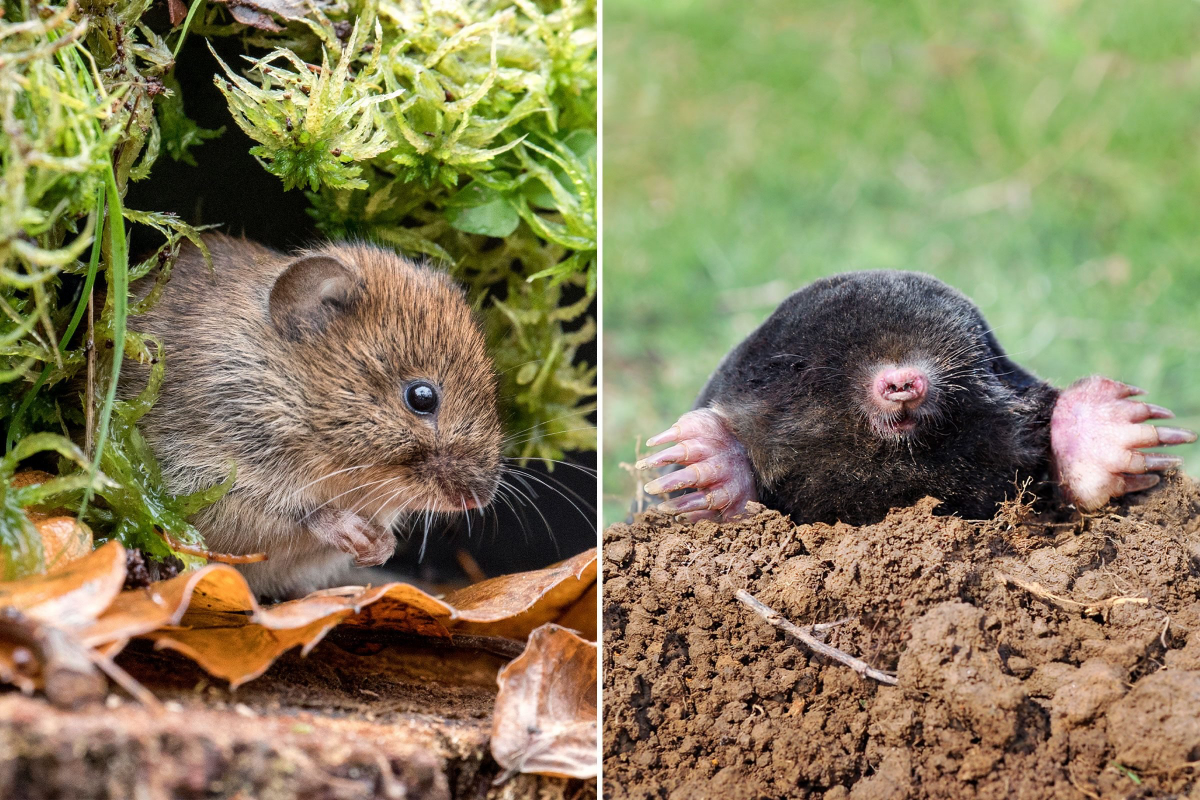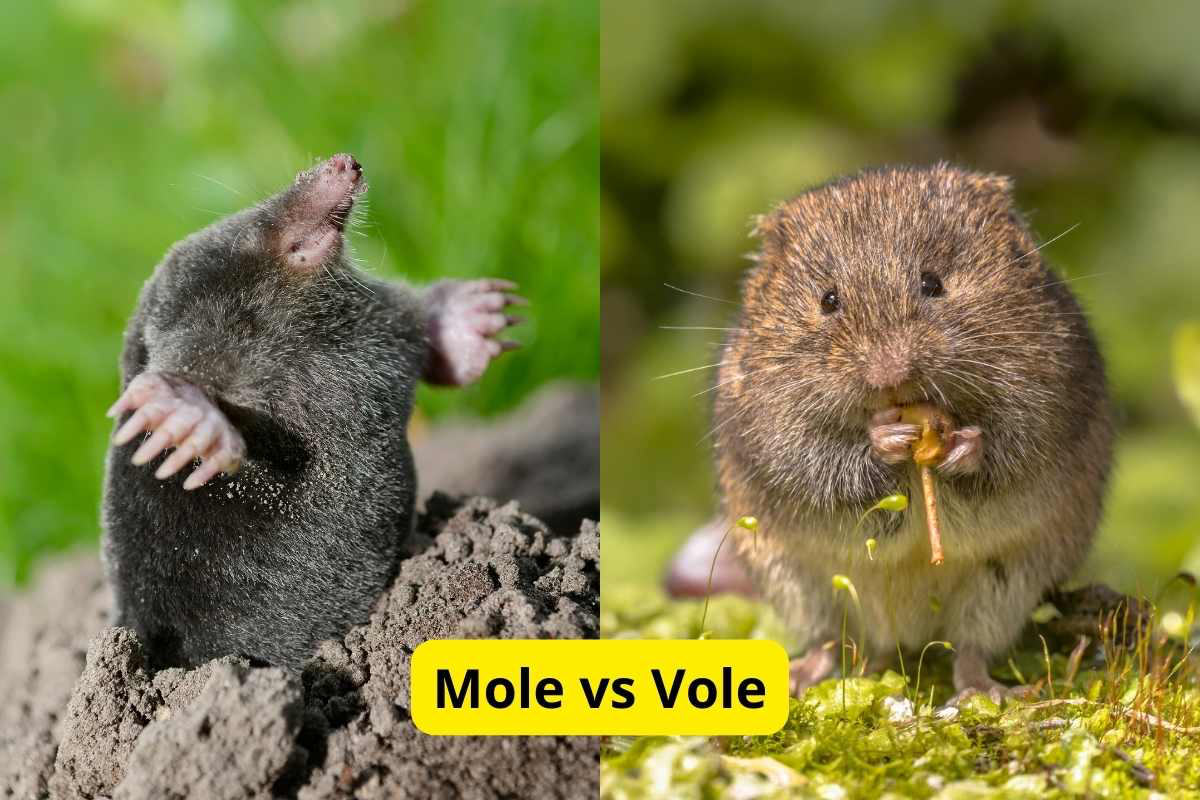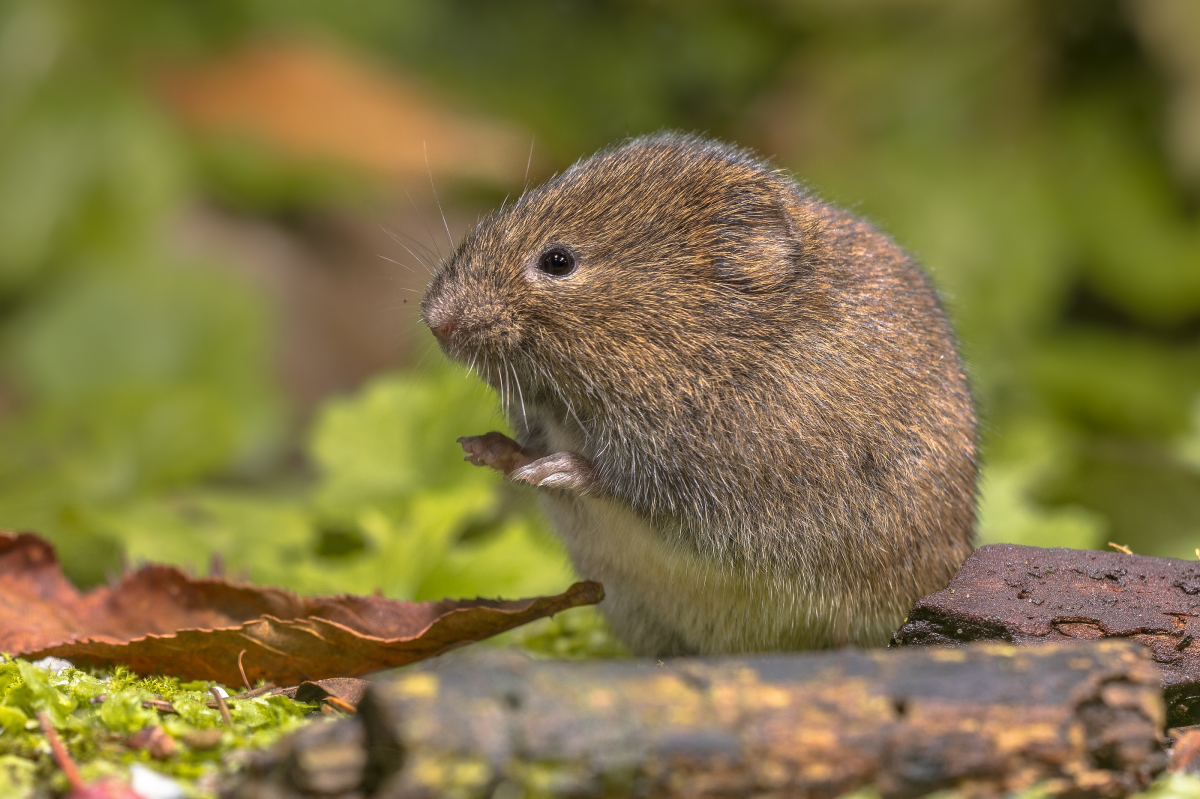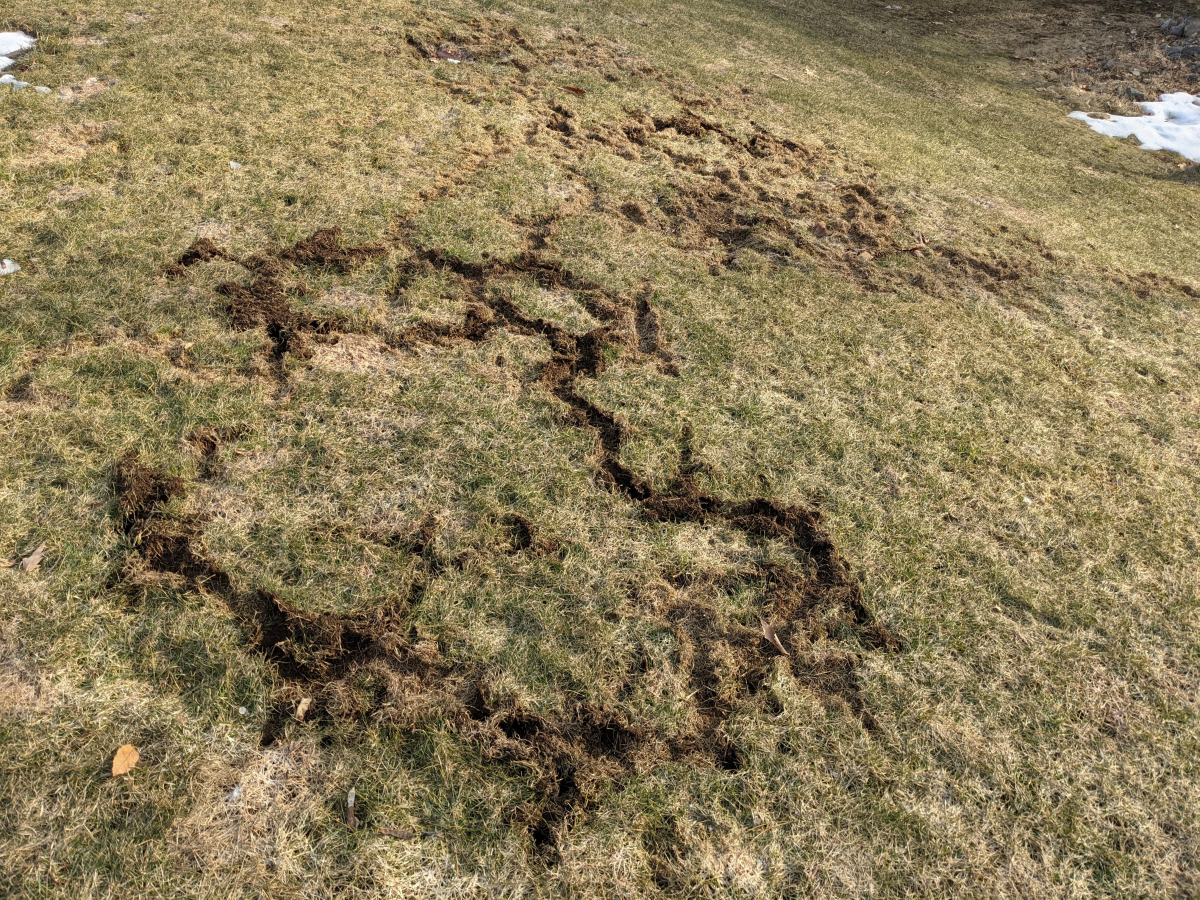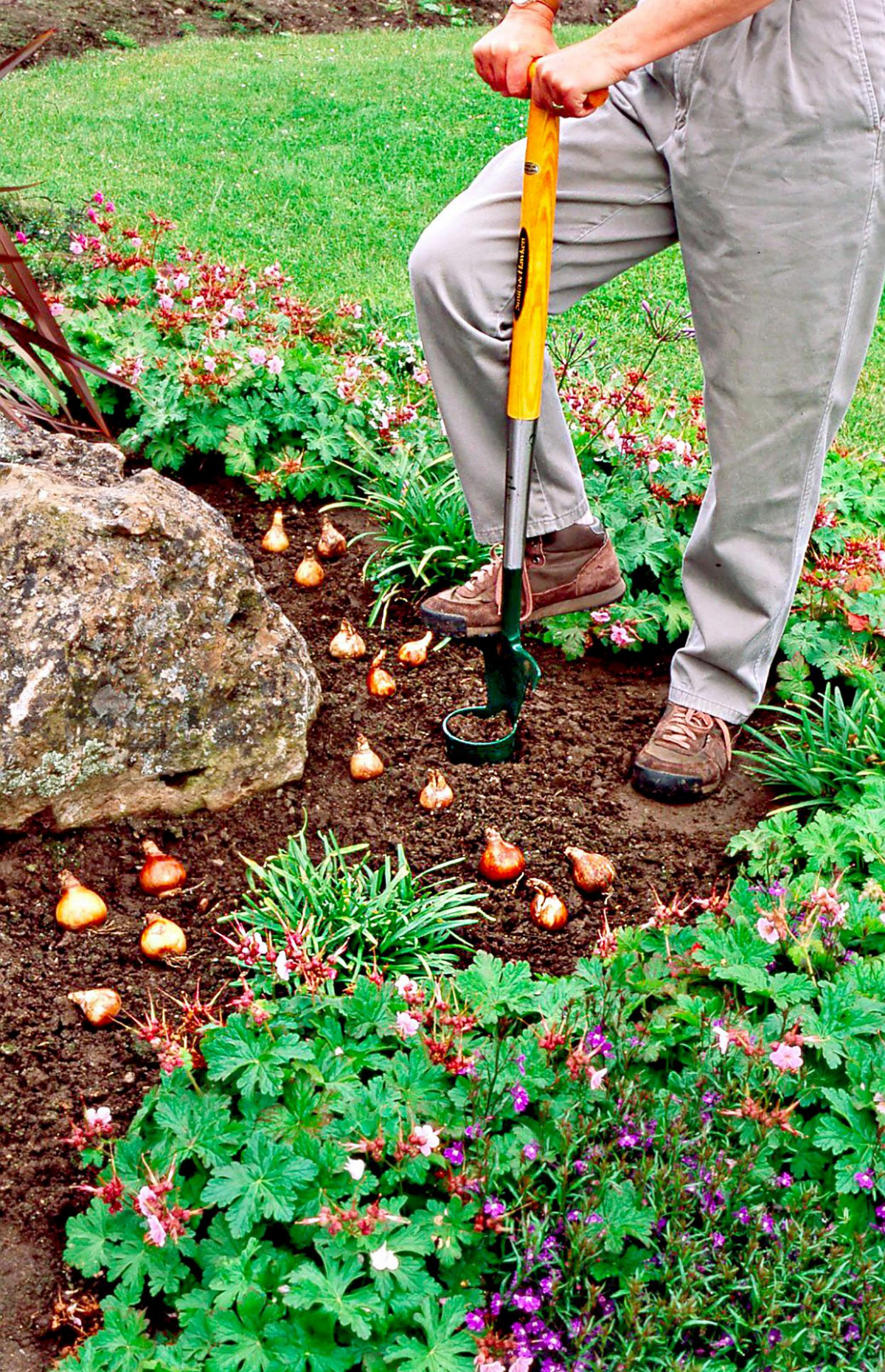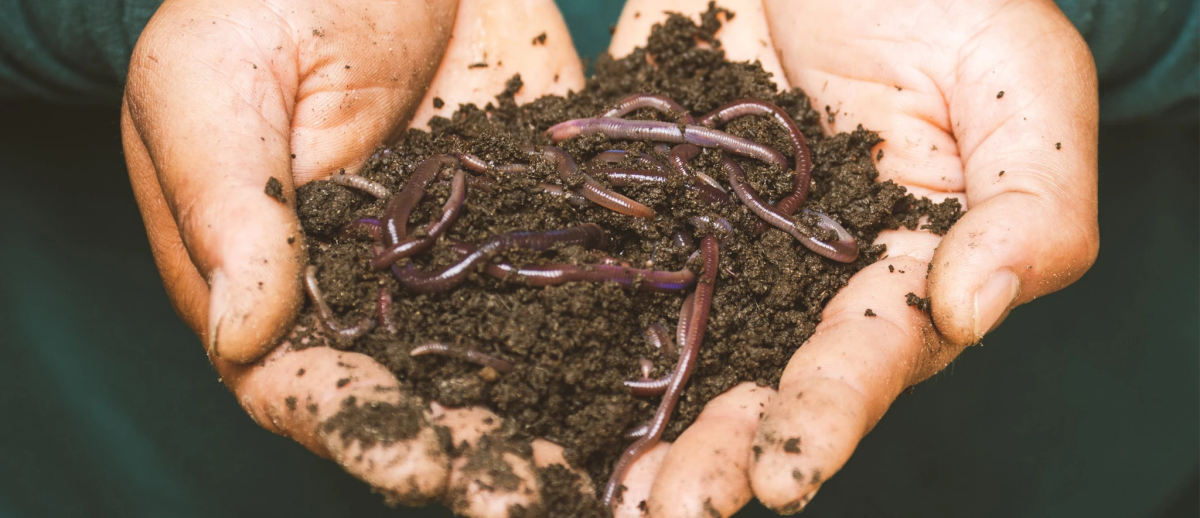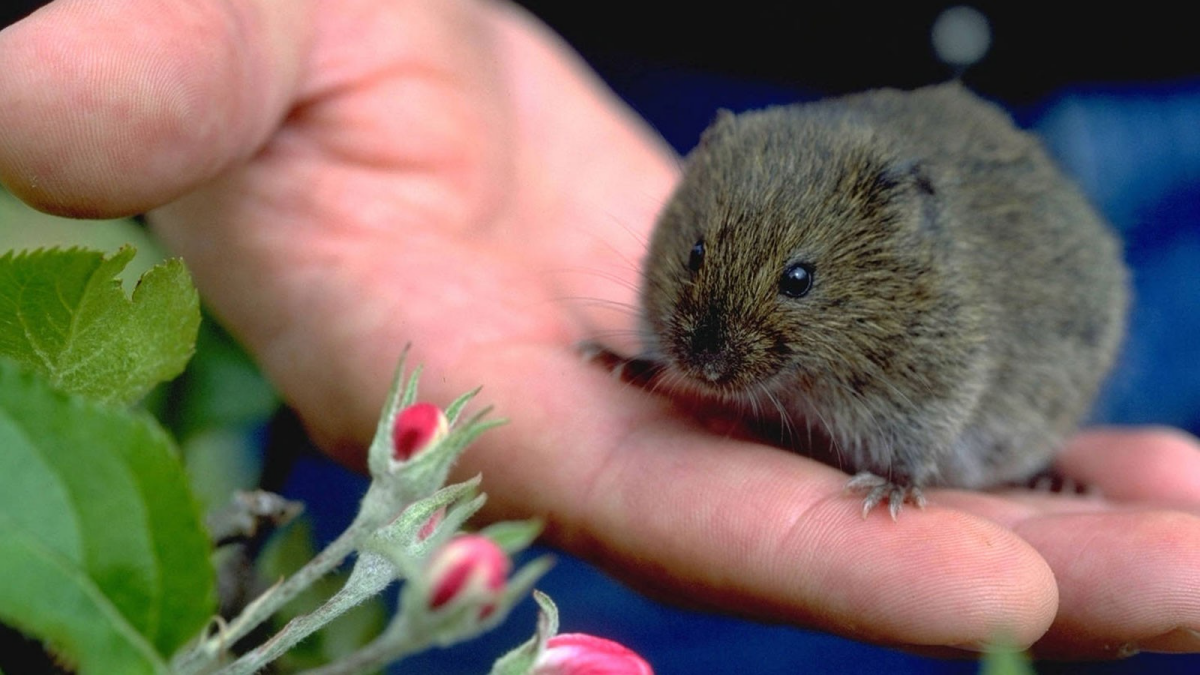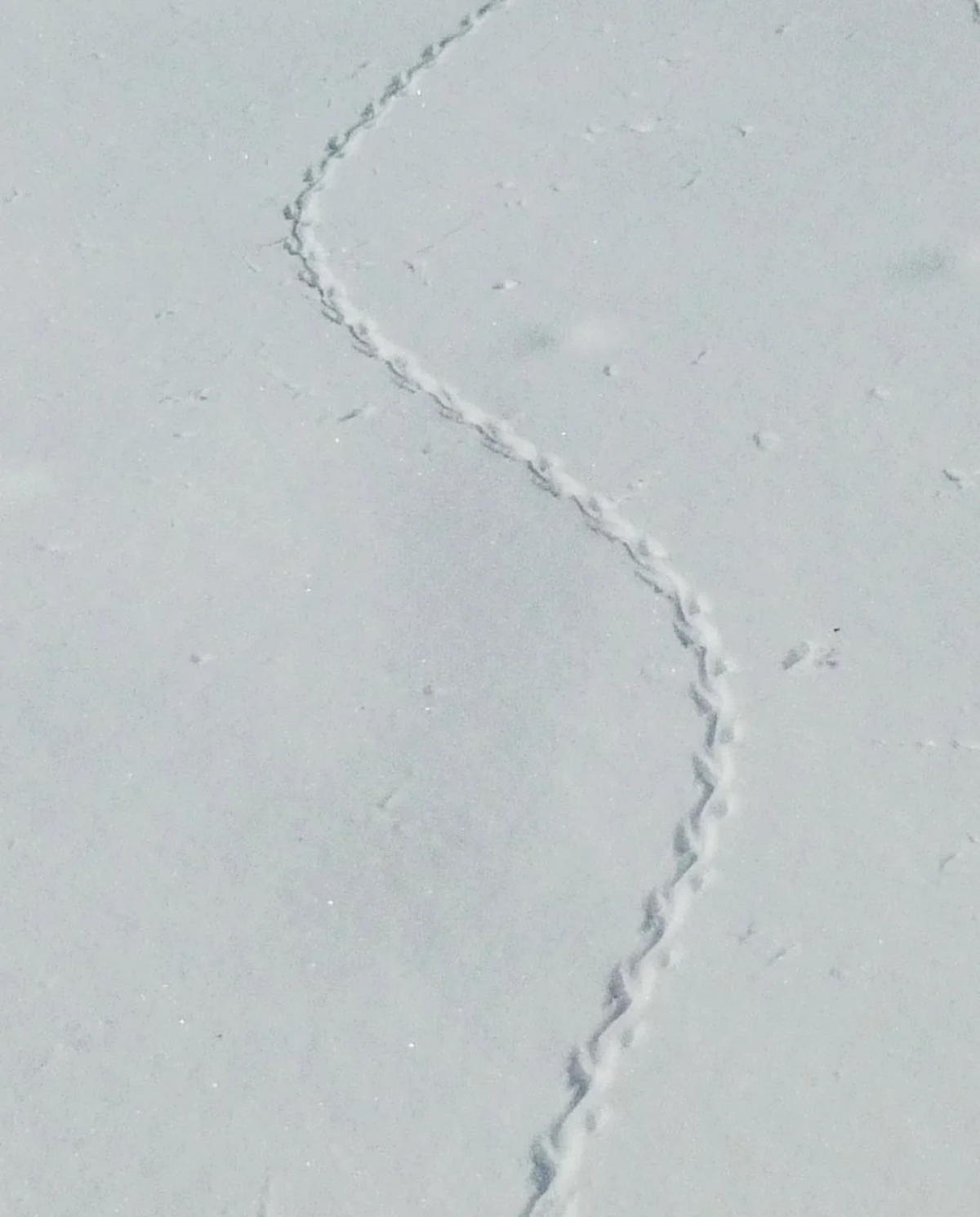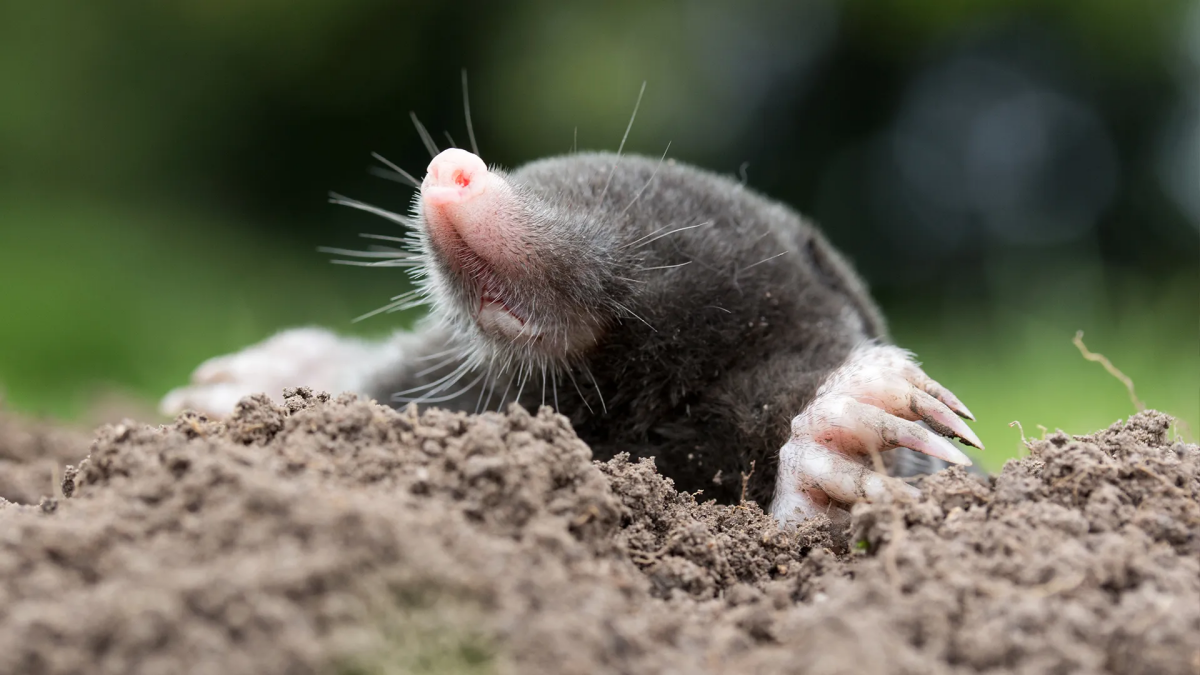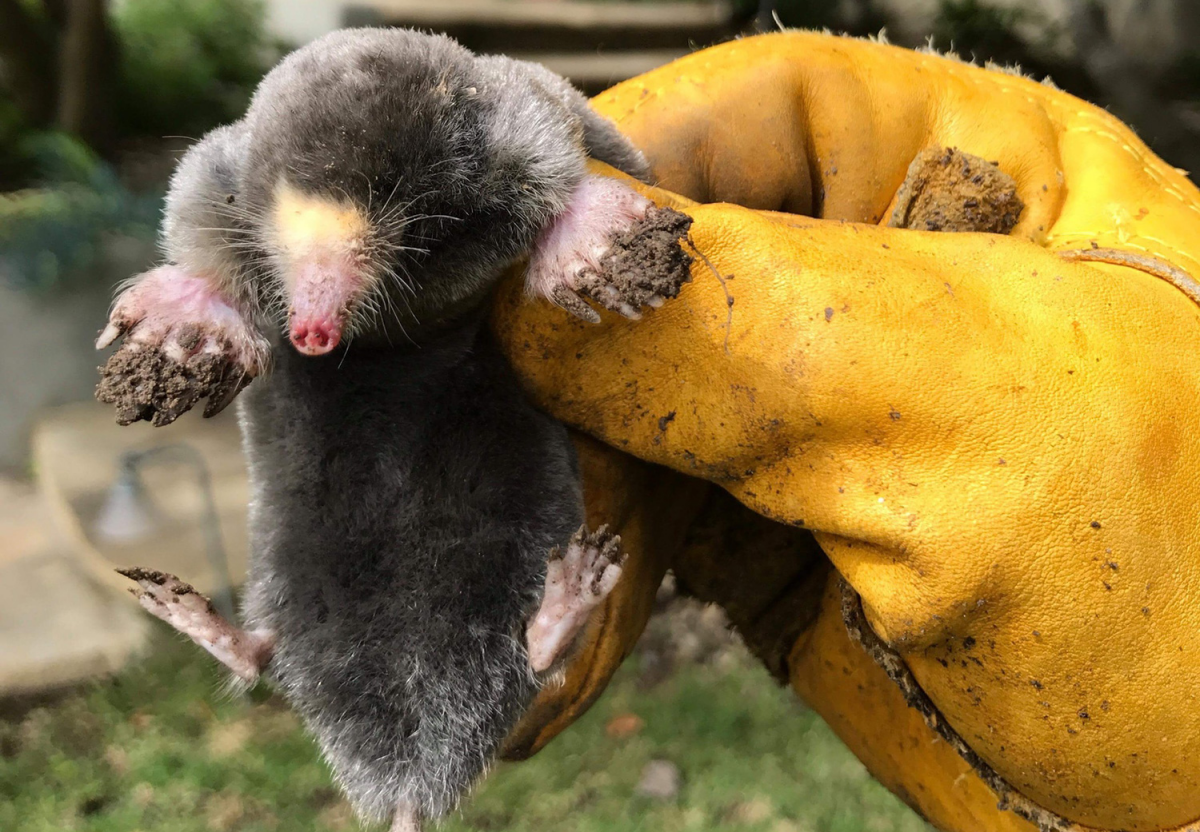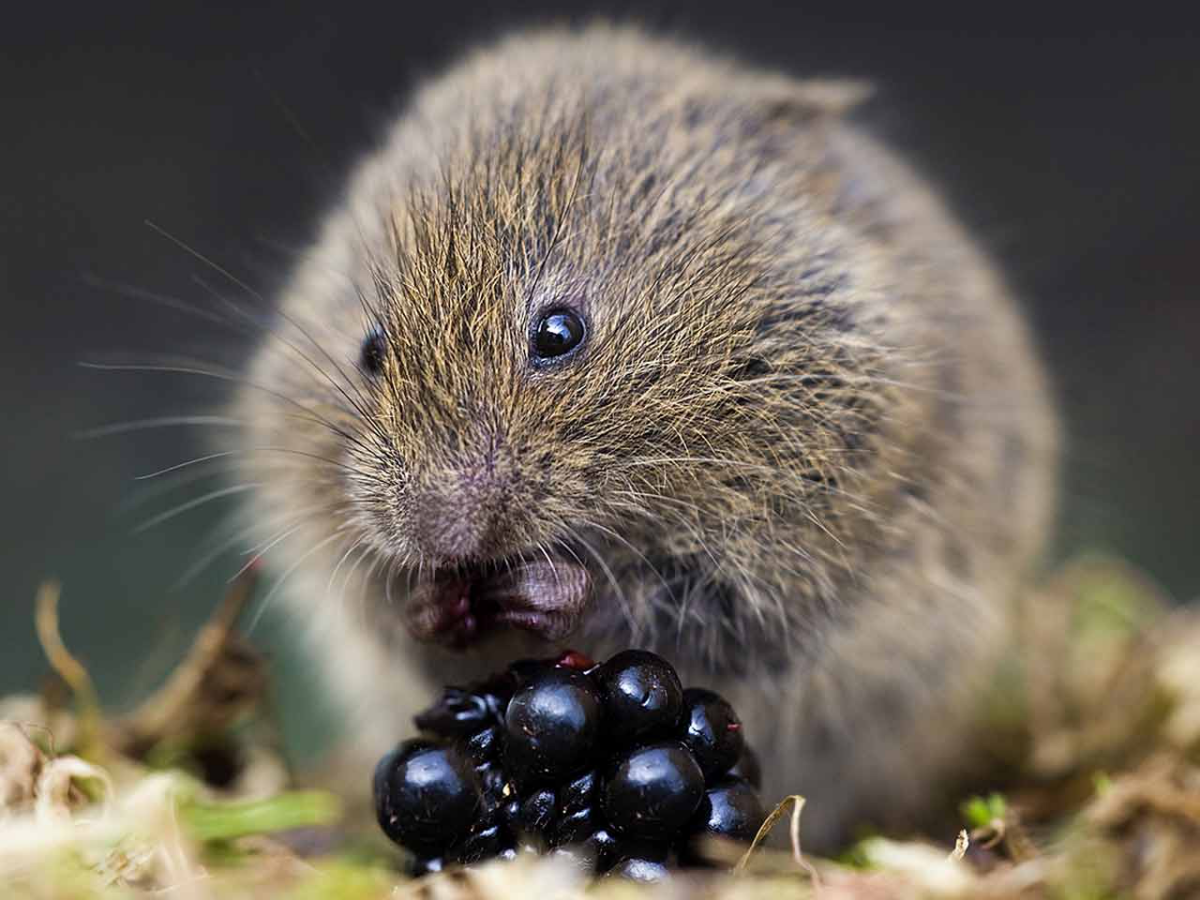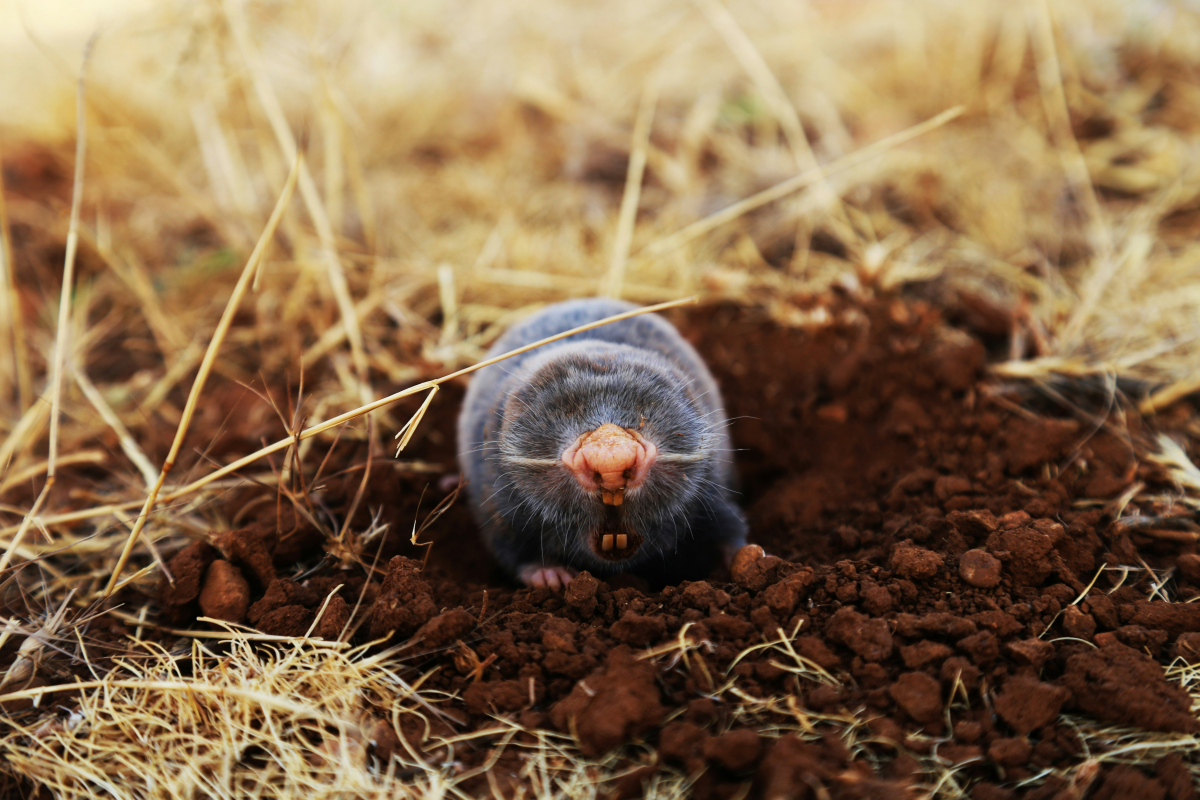Voles Vs Moles: 7 Easy Ways To Tell The Apart
Gardening is not just about the aesthetics and joy of cultivating plants. It’s also a dance with the diverse life forms that inhabit our backyards. In this intricate ballet of nature, two frequent performers are the vole and the mole. While they are often confused with one another due to their subterranean lifestyles, they are vastly different. But the ability to distinguish between the two is more than a trivial piece of trivia. It’s an essential skill for any gardener looking to maintain a healthy and flourishing outdoor space. Before you start dealing with the uninvited guest in your garden, you first need to know what you are up against. That’s why today we will help you easily differentiate voles vs moles.
Two frequent performers in your garden are the vole and the mole
In this article
Voles vs Moles
Voles, often wrongly identified as simple field mice, are indeed small but significant. They’re rodents, notorious for their voracious appetites, which can lead to extensive damage to gardens and crops. Moles, on the other hand, present a different kind of challenge. Larger than their vole counterparts, moles are recognized for their impressive digging abilities. Both can be quite destructive in their own way. But before you can start dealing with them, you first need to figure out which one of these pesky creatures is roaming free in your backyard. Here are some simple ways to tell apart voles vs moles.
See the difference between voles vs moles
Physical appearance
Vole
Voles are often mistaken for their distant cousin – the mouse. This is due to their similar small stature and rodent-like features. Typically measuring between four and nine inches in length, voles have compact, stout bodies. They are covered in short, dense fur that ranges in color from gray to brown. Their rounded snouts and small, beady eyes give them a characteristic ‘cute’ appearance. But this appearance contrasts sharply with their reputation as garden pests. Unlike moles, voles have very visible ears, adding to their mouse-like visage.
Voles typically measure between four and nine inches in length
Mole
Moles are the elusive architects of the garden. These creatures are distinctly different in appearance from voles. They have evolved to thrive in their underground habitats, resulting in some unique physical adaptations. Moles are generally larger than voles. Their body length ranges from four to seven inches. But their most striking feature is their large, spade-like forelimbs and broad paws. They are designed for digging, after all. Moles have velvety fur, usually in shades of dark gray or brown, which helps them move easily through soil. Their eyes and ears are tiny and often hidden by fur, minimizing the entry of dirt while they tunnel.
These creatures are distinctly different in appearance from voles
Burrowing and tunnels
Vole
Voles are industrious little creatures. They are famous for their elaborate runway systems that crisscross through grass and underbrush. These paths are a clear sign of vole activity. They use them to travel, forage for food, and escape predators. Voles prefer to stay close to the surface. So, their runways are typically just beneath the layer of grass or leaves. This makes their presence in a garden quite noticeable. These paths, combined with the holes they use for entering and exiting their burrow systems, can create a noticeable pattern in the landscape. This pattern is often described as a ‘tangle’ of trails that provide insight into the vole’s daily activities and movements.
Their runways are typically just beneath the layer of grass or leaves
Mole
In contrast, moles are masters of the underground. These critters create intricate networks of tunnels and chambers that can extend for hundreds of feet. The most obvious sign of mole activity is the infamous molehill. You will see small mounds of earth pushed to the surface as they excavate their tunnels. These molehills, along with the raised ridges of their tunnels, can be a source of frustration for gardeners, as they disrupt the lawn’s surface. Moles’ tunnels serve multiple purposes. They are a hunting ground for earthworms and insects, a safe travel path, and a nesting area. The depth and complexity of these tunnels vary. Some may come closer to the surface and others deeper underground. It depends on the mole’s needs and the soil conditions.
You will see small mounds of earth pushed to the surface as they excavate their tunnels
Dietary habits
Vole
Voles are primarily herbivores. This means that their diet heavily impacts the vegetation in gardens and fields. They feed on a variety of plant materials. This includes grasses, seeds, roots, and bulbs. During the winter, when food is scarce, voles may resort to bark. So, they will girdle trees and shrubs in the process. This dietary preference can lead to significant damage in gardens and landscaped areas, as voles can quickly decimate ground cover, chew through root systems, and leave plants wilted and dying. The extent of damage caused by voles can be quite extensive, especially when their populations are high, making them a significant concern for gardeners and farmers alike.
They feed on a variety of plant materials
Mole
Moles, in contrast to the herbivorous vole, have a carnivorous diet. So, they are focused primarily on insects and underground invertebrates. Their primary food source is earthworms. But they also consume various larvae, including those of beetles and grubs. This diet means that moles, unlike voles, do not feed on plant material. However, their tunneling activities can indirectly affect plant health. As they excavate their tunnels in search of food, they can disturb plant roots. This can sometimes lead to the drying out or indirect damage to the plants above. The presence of moles can actually be beneficial to the soil, as their tunneling aerates the ground and mixes different soil layers. However, the visible effects of their digging may not always be appreciated by gardeners.
Their primary food source is earthworms
Damage
Vole
Voles present a significant challenge to gardeners and landscapers due to their destructive feeding habits. They are particularly notorious for damaging young trees and shrubs by girdling. This is a process where they chew around the entire base of a tree. Thus, cutting off its vital supply of nutrients and water. This behavior can lead to the death of the tree or shrub. Additionally, voles target root systems, bulbs, and ground cover, leaving a trail of destruction in their wake. Their ability to reproduce rapidly means that a small number of voles can quickly become a large infestation.
Voles present a significant challenge to gardeners and landscapers
Mole
Mole can still cause significant damage to lawns and gardens, albeit indirectly. Their tunneling activities can lead to the creation of molehills and raised areas in the ground. These disruptions not only affect the aesthetics of a lawn but can also lead to problems with mowing. Plus, this can make your outdoor space uneven and hazardous to walk on. Furthermore, the raised tunnels can disturb the roots of grass and other plants. This will potentially cause yellowing or dying in patches where the roots have been damaged.
Mole can still cause significant damage to lawns and gardens
Droppings and tracks
Vole
Identifying voles in a garden can often be done through observation of their droppings and tracks. Vole droppings are small, pellet-like, and typically found along their well-traveled runways. These droppings resemble those of small mice and can be a key indicator of vole presence in a particular area. In addition to droppings, voles may also leave footprints and tail marks in soft soil or snow. This only provides further evidence of their surface activity. Keep in mind that the visibility of these signs can vary depending on the time of year and the density of the vole population.
Identifying voles in a garden can often be done through observation
Mole
Mole droppings and tracks are much less commonly observed than those of voles. Due to their subterranean lifestyle, mole droppings are rarely seen on the surface. Similarly, mole tracks are not typically visible, as moles spend the majority of their time underground. The most evident signs of mole activity are the molehills and raised ridges of their tunnels, rather than direct tracks or droppings. For those trying to identify the presence of moles, these landscape disruptions are the most reliable indicators.
The most evident signs of mole activity are the molehills
Sounds
Vole
While generally quiet, voles do make some noise. Particularly when they are in distress or communicating with each other. These sounds are often described as small squeaks or chirps. They can sometimes be heard by gardeners, especially during quiet times or in close proximity to vole habitats. The sounds are not loud or frequent but can be an additional indicator of vole presence for the observant listener.
Voles do make some noise
Mole
Moles, in contrast, are usually silent creatures. Spending most of their life underground, they have little need for vocal communication. The solitary nature of moles means they do not interact frequently with other moles, further reducing the need for noise. Their presence in a garden is more likely to be noticed through the physical signs of their digging activities rather than any sounds they might make. This silent behavior makes moles more elusive and can sometimes make it challenging to determine their presence until the visible signs of their tunneling are apparent.
The solitary nature of moles means they do not interact frequently with other moles
Seasonal behavior
Vole
Voles are active throughout the year, but their presence becomes more noticeable during specific times. Spring and fall are peak periods for vole activity. These seasons are their primary breeding seasons. During these times, the increased activity can lead to more visible damage in gardens and landscapes. Voles also tend to store food for the winter, which can lead to increased foraging activity as they prepare for colder months. Their adaptability to various environments means that their activity levels and visibility can vary, but these seasonal patterns are generally consistent across different regions.
Voles are active throughout the year
Mole
Moles also maintain year-round activity. However, their presence is most prominent during certain conditions. Wet periods, like the spring and fall, are conducive to mole activity. This is because the soil is softer and easier for them to dig through. During these times, the signs of their tunneling – molehills and raised ridges – become more apparent. The increased activity is primarily due to their search for food. During this time earthworms and other invertebrates are more abundant and closer to the surface during these wetter conditions. While moles are solitary animals, their increased activity during these periods can make it seem like there is a larger population than there actually is.
Moles also maintain year-round activity
Understanding the differences between voles vs moles is key to managing them effectively in your garden. Now that you can recognize them by their distinct characteristics and behaviors, you can make better-informed decisions. You can make choices that will benefit both your gardens and the wildlife inhabiting it. As gardeners, we can coexist with these creatures. We should embracing their roles in the natural world while protecting our cherished green spaces.
Understanding the differences between voles vs moles is key to managing them effectively
